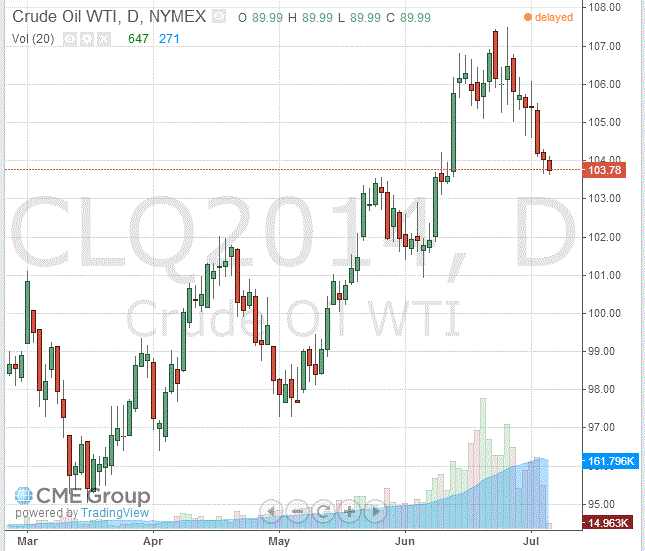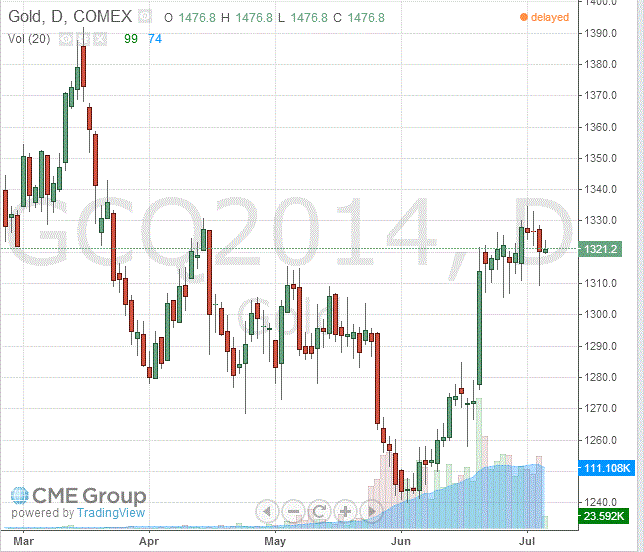Notícias do Mercado
-
16:40
Oil: an overview of the market situation
Prices of oil futures fell slightly today, but in the week showed maximum decline from the beginning of January. The focus of the market is still in the Middle East.
"Concerns about the declining supply, but prices are kept at a high level due to Iraq. Improving consumption forecasts combined with fears for delivery. Under such conditions, sell a few," - said vice-president of IHS Energy Insight Victor Shum. "If not for Iraq, the price would be much lower due to the possibility of increasing supplies from Libya and Iran"
It is worth noting that investors follow the negotiations on Iran's nuclear program that could lead to the lifting of sanctions, including Iran's oil exports. As for Libya, earlier this week the Prime Minister announced the end of the oil crisis, during which exports almost stopped.
At the same time, the Government of Iraq in the autonomous province of Kurdistan threatens to sue the central government does not recognize the right to an independent Kurdistan oil exports. In Syria, the Islamists seized the country's largest oil field, but Syria is not among the major oil producers and oil exported since 2011, when it came to international sanctions.
Meanwhile, we add that the American brand of WTI crude oil has suffered greater losses than Brent, responding to concerns that the hurricane "Arthur", coming to the shores of the United States, will reduce the demand for gasoline from the Americans, who during the holidays may prefer to stay at home.
Also note that today the trading volume declined as U.S. markets closed for the Independence Day holiday.
Cost of the August futures on U.S. light crude oil WTI (Light Sweet Crude Oil) fell to $ 103.78 a barrel on the New York Mercantile Exchange (NYMEX).
August futures price for North Sea Brent crude oil mixture fell 20 cents to $ 110.82 a barrel on the London exchange ICE Futures Europe.
-
16:20
Gold: an overview of the market situation
Gold prices rose slightly, while closer to the maximum value since March. Continued to dictate the dynamics of trading yesterday's optimistic data on U.S. employment. We also add that today's trading volume is lower than usual as U.S. markets closed for the Independence Day holiday.
Recall that yesterday's report from the U.S. Department of Labor has shown that non-farm employment increased to a seasonally adjusted 288,000 last month. Gain May was revised to 224,000 from 217,000, while the improvement in April was increased to 304,000 from 282,000. This was the strongest increase since January 2012. The unemployment rate, derived from a separate survey of households, fell to 6.1% in June to the lowest level since September 2008. Improvement reflects more people employed, while the size of the workforce has remained relatively stable. Economists had forecast an increase in employment by 211,000 and the unemployment rate according to them was to remain unchanged - at 6.3%.
"Liquidity fell again in connection with a holiday in the United States. But when trading volume will increase on Monday, gold becomes cheaper because long positions are closed, "- said precious metals trader in Tokyo.
From a technical standpoint, the price could fall to $ 1,300 an ounce, because it had previously fallen below the support level of $ 1,316.
Over the week, gold has risen in price again, extending this series to 5 weeks due to geopolitical problems in the Middle East and Ukraine.
The cost of the August gold futures on the COMEX today rose to $ 1321.2 per ounce.
-
05:32
Commodities. Daily history for Jule 3’2014:
(raw materials / closing price /% change)
Gold $1,319.92 -6.94 -0.52%
Oil $103.84 -0.64 -0.61%
-

